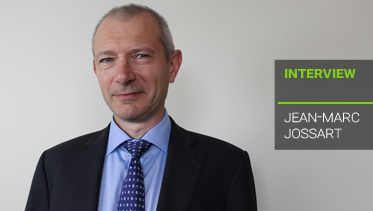
AEBIOM, the European Biomass Association, has decided to support initiatives for the development of bioenergy sector in the Danube region, the organization’s general secretary Jean-Marc Jossart told Balkan Green Energy News. “Last year we noticed a growing interest in Brussels and at the European Union level” for the objective, he said in an interview. An example of the support is the BioRES project, where the idea is to help create trade platforms in Serbia, Bulgaria and Croatia, with intermediary steps between the biomass suppliers, forest owners and wood industry on the one side and final users, buyers on the other, Jossart added.
When AEBIOM was founded in 1990, it had five national associations as members, and now they are 29, alongside almost 100 companies. A strategy for the heating sector is expected at the European level, so the association is representing interests of its sector, while preparing and developing projects for education, the supply chain, mapping and technology, to name a few.
Asked about the inner drive throughout his career, AEBIOM’s official explained the basic reasons for his interest in bioenergy were still the same, even though some are more important and they all change over the years. “The sector changed a lot in the last 20 or 25 years. We develop biomass because of climate change, but also for another central reason, the future of EU. Let’s think about EU energy independence, in the context of a Russian and Ukrainian gas crisis,” Jossart stated. Lately, one of the crucial drivers, in his words, is economic development and job creation, because of the recession, and policy makers understand that.
“Personally speaking, I prefer working in this kind of business, compared to the polluting fuels and the chase for profit. Part of our work focuses on small, decentralized value chains and actors like cities and forest owners, instead of importing coal from Australia or oil from the Middle East,” he underscored. Completely different in terms of the vision for the future, Jossart stressed.
You have been stressing how important it is to have a qualified workforce, including people in research and development. In many markets that we follow the biomass-fuelled facilities have only just started to develop. What are the most important points for education and training?
The development of bioenergy is uneven in Europe. Some countries are frontrunners, while others can do much more. Especially in the Balkan region, as there is great potential for biomass. In terms of the qualification of the workforce, it is important to have professionals already when the market starts to develop. Especially installers, because if there are failures in installations, we know that bad news are spreading faster than the good news. On the long run that could lead people to think that biomass is not reliable source of energy. That’s why it’s important to have qualified installers, architects, project developers, and consultants.
Regarding research, bioenergy is traditional and reliable and technologically advanced already. But there is need for work towards integration of biomass and other renewables into the energy system as a whole. Biomass is a resource that can improve fuel quality and bring new types of fuel, whether liquid or gaseous, making energy system more reliable. It is easier to use biomass in the existing infrastructure if we have good biomass quality.
And are there specific study programmes for engineers in bioenergy, and does AEBIOM help in that direction?
We are cooperating with Eurec, the Association of European Renewable Energy Research Centres, which organizes master studies in renewables in several universities through Europe. They are training dozens of students every year. There are also more and more basic studies including renewables: for economists, civil engineers, and architects, for instance. We cooperate with Eurec in a platform called KnowRES for identifying gaps between skills and competences that people have at the end of their studies and what the market needs.
Potential consumers are usually concerned about biomass supply. What role do governments have in the mobilization of forest resources, especially in an underdeveloped market?
The government should provide political support and vision, to let the industry know biomass will be part of the energy picture. This political support is essential. The market should be organized with proper legislation enabling utilization of biomass. In some countries the use of biomass remains limited, for example where forest residues must stay in the forest, and it doesn’t always make sense. Then networking can start by putting different sectors together. The wood-based industry already has access to the resource, the machines and know-how. They can make the links with consumers. Little by little there is a whole supply chain, first agreements and projects.
Which part of bioenergy industry has the best perspective for investors, provided that regulations enable fair conditions for the business?
Every country has some own challenges. For instance, some in Eastern Europe are dependent on Russian gas, and they need a clear strategy to switch from fossil fuels to renewables, and in all market segments: for the house, the buildings, at the company and municipal level, to develop district heating. Some of these markets are more profitable than others due to fuel prices and other factors.
In Baltic countries district heating is booming. They pay a very high, political price for gas, and that makes bioenergy extremely competitive. There are dozens of new facilities. In Italy there is huge growth in the segment of individual pellet stoves for households, 200,000 are sold every year due to high price of oil because of tax.
What is the general course in the advances of technology for the supply of biofuels and energy production? Which energy crops are the most popular?
We have about 100,000 hectares in Europe and this category is stable. But other sorts of biomass are growing, like residues from the wood-based industry and wood biomass coming directly from the forest. That kind of fuel is more interesting than agricultural biomass.
In this context efforts are made to develop technology in terms of efficiency of machines for harvesting, chipping and transporting. As it is the case, for instance, in projects such as LogistEC, an EU platform for improving technologies of the biomass logistics chains.
Has your organization pushed for any new regulation or amendments that turned out to be a great success for biomass business in a particular country?
Lately there has been a lot of new legislation for biomass and bioenergy in general. To give an example of a recent success, in the framework of the implementation of eco-labels for thermal installations, we try to demonstrate to EU policy makers that biomass stoves and boilers should be ranked among the best for their efficiency and environmental benefits. The heat strategy is also very important, as heating is a bigger sector than power or transport. This is the most affordable renewable energy source, and at the same time it is the answer to the challenge of energy poverty, especially for heating homes. This segment has the highest expenses. A strategy at the European level is expected in November and AEBIOM is definitely playing a crucial role in help for this market.
Our members all work also at the national level. And Balkan countries must make their voice heard in Europe. Be as loud as possible in order to achieve something in Brussels. I invite people in Southeastern Europe to become members of AEBIOM to share views and get information from the market.
Which European countries have the most significant share of small-scale biofuel installations?
In the pellet sector, as I said, Italy is the biggest market. Sweden, Germany, Denmark, France, Austria, they have all developed at the small scale significantly. There are 500,000 pellet stoves sold per year in Europe, plus 100,000 boilers. And the commodity market grows by a million tons a year of pellet in the European Union. Within the Basis project we mapped small-scale installations that use woodchips at the European level. There’s a map with locations of biomass facilities. It helps suppliers to find clients or it helps new biomass units to see where potential competitors are.
 Chart 1. Number of plants from 1 MW to 5 MW using woodchips as fuel in the European Union
Chart 1. Number of plants from 1 MW to 5 MW using woodchips as fuel in the European Union
What specific incentives are the most beneficial for the segment and how does it affect the dynamics in the sector?
We have seen the development of support to investments here and there in the EU in the last years. In our experience this works for a limited period of time. Moreover we noticed the multiplication of stop-and-go effect on the market with sometime critical impact on market players.
I believe the medium-term vision and strategy should be to tax polluting fuels. The carbon tax and taxation system in general are the best tools. In Sweden this makes biomass cheaper than fossil fuels and consumers adapt quickly. Higher taxes also bring money to the state budget.
 Chart 2. Increased use of bioenergy and reduced import dependency
Chart 2. Increased use of bioenergy and reduced import dependency
How does ENplus certification help companies? Do you promote any other standards or participate in their development?
That system in fact gives guaranties for the pellet’s quality, an extremely important aspect for the market stability and the trust of the clients. If they buy oil or gas, they won’t question its quality, because they are standardized. This should be the case for biomass and pellet. Companies have understood that they should provide uniform standard quality and that’s why there are now 250 production companies that have chosen to comply with the scheme.
ENplus is a very demanding certification scheme for producers that guarantees pellet quality all along the supply chain. The technical requirements are based on the ISO 17225-2 standard and are even stricter for some parameters. ENplus certification showed extraordinary growth with 1 million tonnes certified in 2011 and more than 7 million today.

















